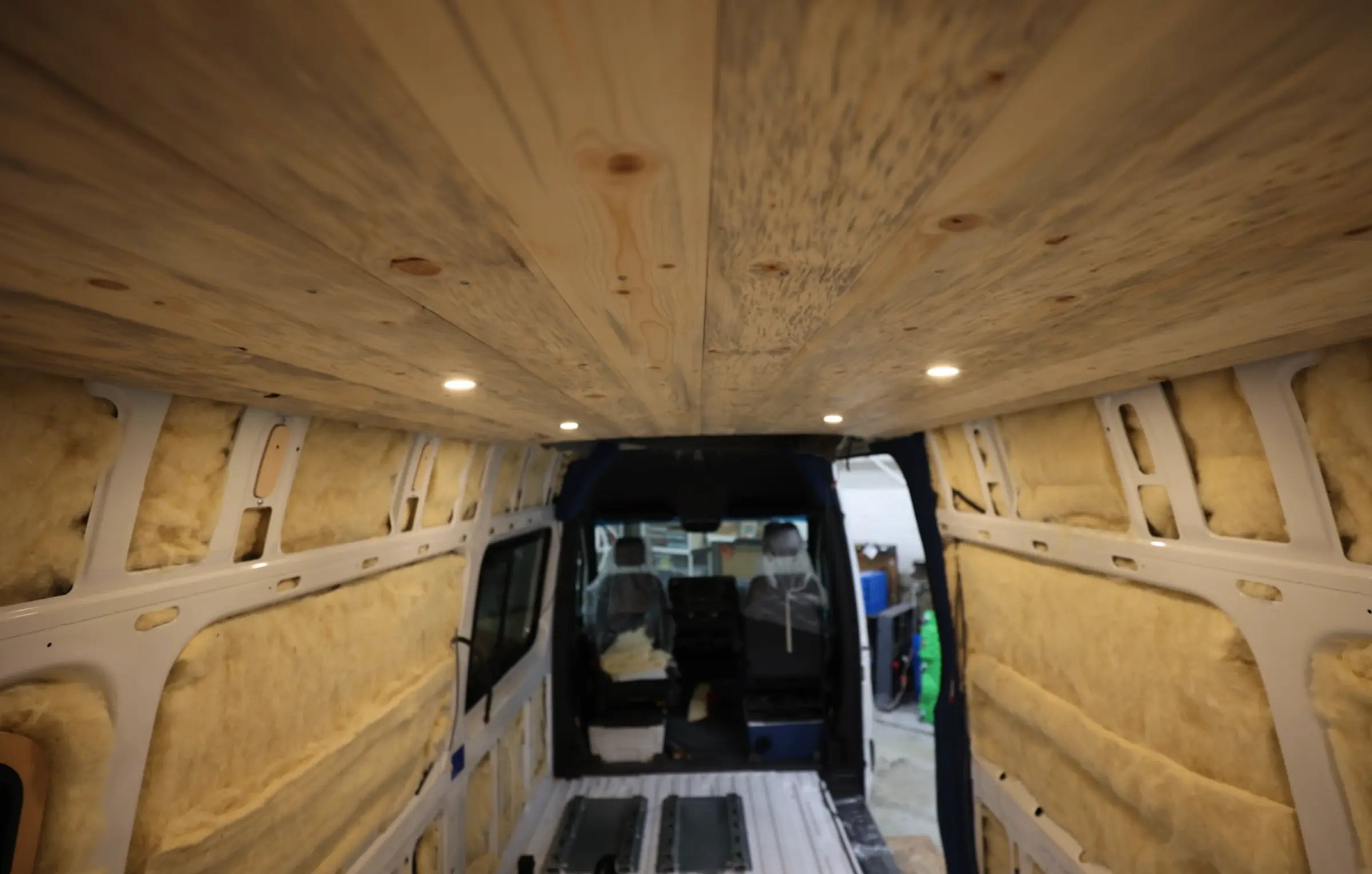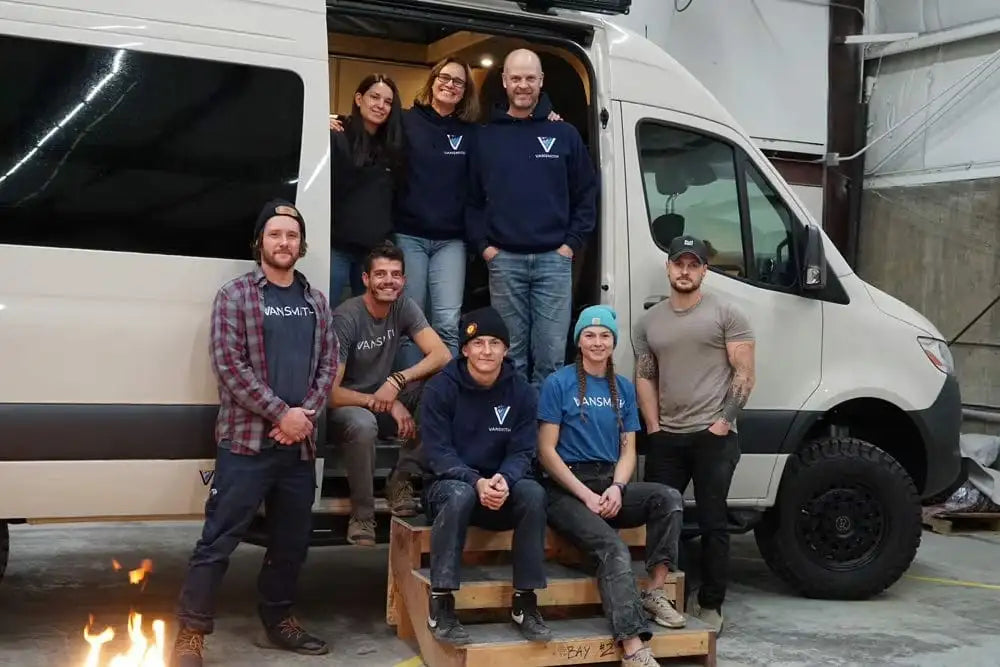Van insulation might not be the most glamorous part of your conversion, but it's arguably the most important. Get it right, and you'll enjoy comfortable temperatures, minimal condensation, and quiet road trips. Get it wrong, and you'll deal with uncomfortable temperature swings, moisture problems, and potentially expensive repairs down the road.
After nearly a decade of van conversions in Colorado—where we see everything from blazing summer heat to below-zero mountain nights—we've learned what works and what doesn't when it comes to van life insulation. This comprehensive guide covers the best insulation for van life, proven installation methods, and how to avoid the common mistakes that can turn your dream van into a condensation nightmare.
Why Van Insulation Matters More Than You Think
Van insulation does much more than just keep you warm or cool. In the confined space of a van, insulation affects comfort, health, energy efficiency, and even the longevity of your conversion. Here's why getting it right is crucial:
Temperature Control and Comfort
A well-insulated van maintains comfortable temperatures with less energy input from heating or cooling systems. This means your battery bank lasts longer, your propane consumption decreases, and you stay comfortable in a wider range of climates.
Condensation Prevention
This is the big one that many DIY builders underestimate. Without proper insulation, warm interior air hits cold metal surfaces and creates condensation. This moisture can lead to:
-
Mold and mildew growth
-
Rust and corrosion issues
-
Unpleasant odors and health problems
-
Damage to interior finishes and belongings
Noise Reduction
Quality van insulation significantly reduces road noise, engine noise, and external sounds. This makes for more peaceful sleeping, better conversation, and overall improved quality of life on the road.
Energy Efficiency
Proper insulation reduces the load on your heating and cooling systems, extending battery life and reducing fuel consumption. In a van where energy management is crucial, this efficiency translates to longer off-grid capability.
Understanding Van-Specific Insulation Challenges
Vans present unique insulation challenges that differ from traditional building applications:
Thermal Bridging
Van walls, floors, and ceilings are metal, which conducts heat very efficiently. Without addressing thermal bridging, your insulation's effectiveness can be dramatically reduced as heat transfers through the metal framework.
Space Constraints
Every inch matters in van conversions. Insulation solutions must provide maximum thermal performance in minimal thickness while still fitting around the van's existing structure.
Vibration and Movement
Van insulation must withstand constant vibration and movement without settling, shifting, or degrading. Materials that work fine in stationary buildings may fail in mobile applications.
Moisture Management
Vans experience more extreme temperature differentials and humidity variations than traditional buildings. Your insulation system must handle these conditions without trapping moisture.
Best Van Insulation Materials: Pros and Cons
Spray Foam Insulation
Closed-Cell Spray Foam Pros:
-
Excellent thermal performance (R-6 to R-7 per inch)
-
Creates air and vapor barrier simultaneously
-
Fills irregular spaces completely
-
Provides structural reinforcement
-
Minimizes thermal bridging
Closed-Cell Spray Foam Cons:
-
Expensive installation cost
-
Requires professional application
-
Difficult to access systems later
-
Can trap moisture if vapor barrier fails
-
Off-gassing concerns during application
Best Use Cases: Spray foam works well for van lifers prioritizing maximum thermal performance and willing to invest in professional installation. It's particularly effective in extreme climate conditions.
Havelock Wool (Natural Fiber Insulation)
Havelock Wool Pros:
-
Naturally manages moisture without vapor barriers
-
Excellent thermal performance (R-3.6 per inch)
-
Absorbs harmful chemicals and odors
-
Fire resistant without chemical treatments
-
Sustainable and environmentally friendly
-
Easy to work with and adjust
Havelock Wool Cons:
-
Higher cost than synthetic alternatives
-
Requires protection from rodents
-
Limited availability in some regions
-
Can settle over time if not properly installed
Why The Vansmith Recommends It: We include Havelock Wool in our Green Package because it naturally manages the moisture challenges that plague many van conversions. Its ability to regulate humidity while providing excellent insulation makes it ideal for van applications.
Polyisocyanurate (Polyiso) Rigid Foam
Polyiso Pros:
-
High R-value per inch (R-6 to R-6.5)
-
Relatively affordable
-
Easy to cut and install
-
Creates thermal break when properly installed
-
Moisture resistant
Polyiso Cons:
-
Performance decreases significantly in cold temperatures
-
Requires careful sealing to prevent thermal bridging
-
Can be difficult to fit around irregular van surfaces
-
May off-gas initially
Best Applications: Works well in moderate climates and as part of a layered insulation system. Less effective for extreme cold applications.
XPS (Extruded Polystyrene) Rigid Foam
XPS Pros:
-
Consistent performance across temperature ranges
-
Moisture resistant
-
Relatively affordable
-
Easy to work with
-
Good compressive strength
XPS Cons:
-
Lower R-value than polyiso (R-5 per inch)
-
Can be damaged by UV exposure
-
Requires careful installation to avoid thermal bridging
-
Environmental concerns with manufacturing process
Good For: Budget-conscious builders in moderate climates who need reliable performance without premium cost.
Reflective Insulation (Reflectix and Similar)
Reflective Insulation Pros:
-
Lightweight and thin
-
Easy to install
-
Reflects radiant heat effectively
-
Moisture resistant
-
Inexpensive
Reflective Insulation Cons:
-
Minimal conductive/convective insulation value
-
Only effective against radiant heat
-
Can create condensation issues if improperly installed
-
Often oversold as complete solution
Reality Check: Reflective insulation works as part of a complete system but should never be your only insulation. It's effective against radiant heat but provides minimal protection against conductive heat transfer.
Fiberglass Insulation
Why We Don't Recommend Fiberglass: While common in buildings, fiberglass insulation is poorly suited for van applications due to:
-
Moisture absorption and retention
-
Settlement and compression issues
-
Difficult installation in van cavities
-
Health concerns during installation
-
Poor performance when compressed
Van Insulation Installation Methods
The Layered Approach
The most effective van insulation strategies use multiple layers and materials to address different heat transfer methods:
Layer 1: Thermal Break Install rigid foam insulation directly against van walls to minimize thermal bridging through the metal structure.
Layer 2: Cavity Fill Fill remaining cavities with high-performance insulation like Havelock Wool or quality spray foam.
Layer 3: Interior Barrier Install interior paneling that provides additional insulation value and vapor management.
Addressing Thermal Bridging
Wall Insulation Strategy:
-
Install 1-2 inches of rigid foam directly against van walls
-
Use adhesive or mechanical fasteners appropriate for your van
-
Seal all joints with appropriate tape



